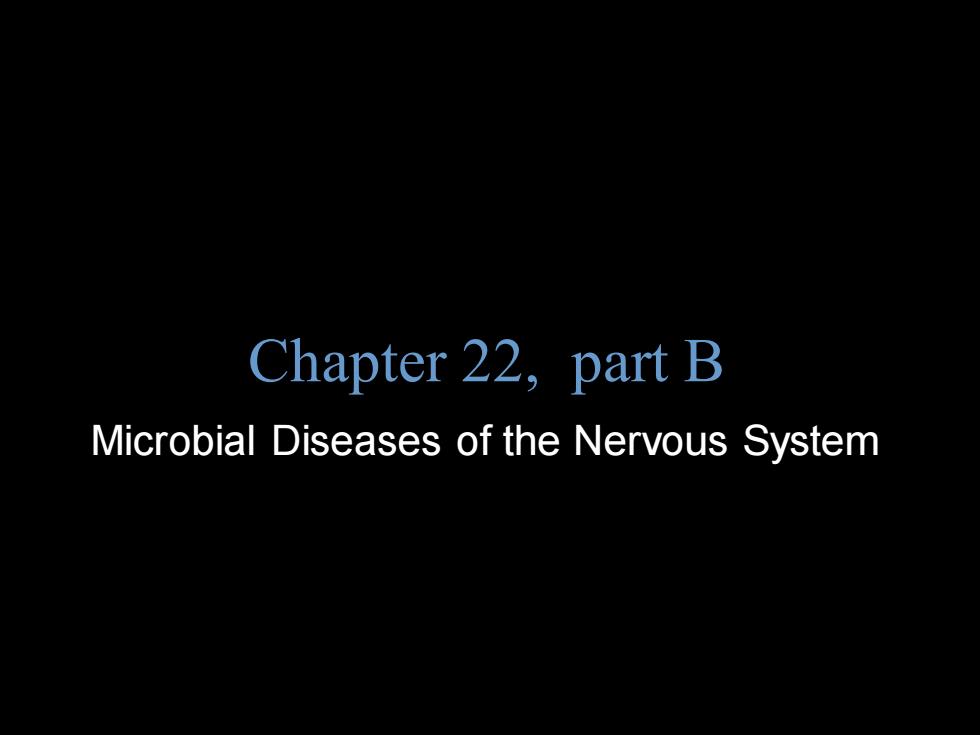
Chapter 22,part B Microbial Diseases of the Nervous System
Copyright © 2004 Pearson Education, Inc., publishing as Benjamin Cummings B.E Pruitt & Jane J. Stein Chapter 22, part B Microbial Diseases of the Nervous System
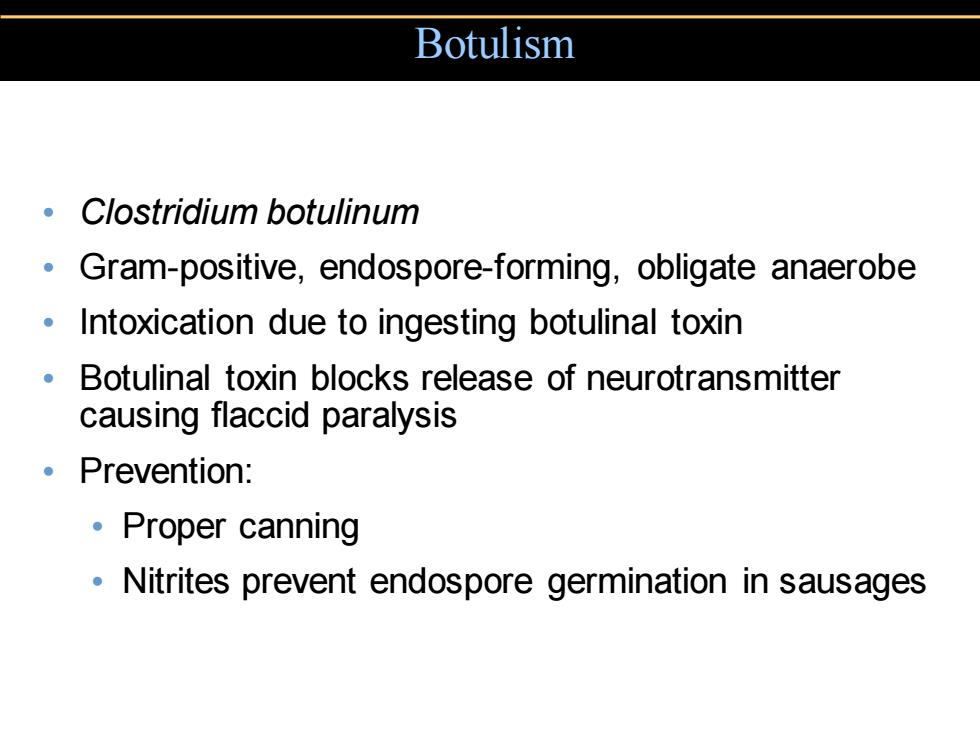
Botulism Clostridium botulinum Gram-positive,endospore-forming,obligate anaerobe Intoxication due to ingesting botulinal toxin Botulinal toxin blocks release of neurotransmitter causing flaccid paralysis 。Prevention: ·Proper canning Nitrites prevent endospore germination in sausages
• Clostridium botulinum • Gram-positive, endospore-forming, obligate anaerobe • Intoxication due to ingesting botulinal toxin • Botulinal toxin blocks release of neurotransmitter causing flaccid paralysis • Prevention: • Proper canning • Nitrites prevent endospore germination in sausages Botulism
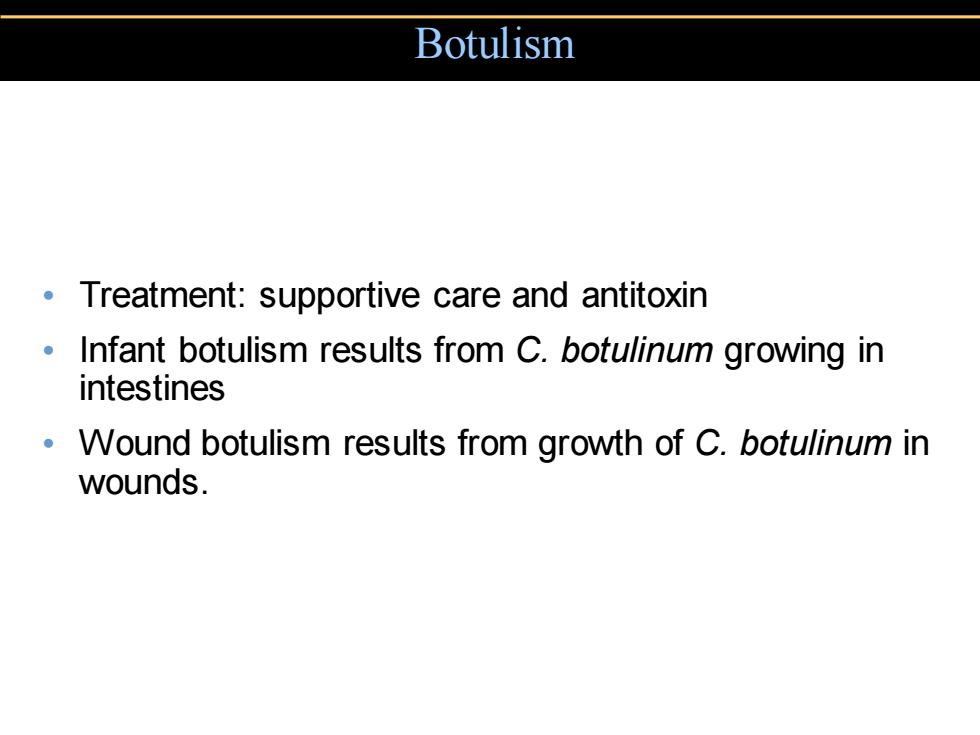
Botulism Treatment:supportive care and antitoxin Infant botulism results from C.botulinum growing in intestines Wound botulism results from growth of C.botulinum in wounds
• Treatment: supportive care and antitoxin • Infant botulism results from C. botulinum growing in intestines • Wound botulism results from growth of C. botulinum in wounds. Botulism
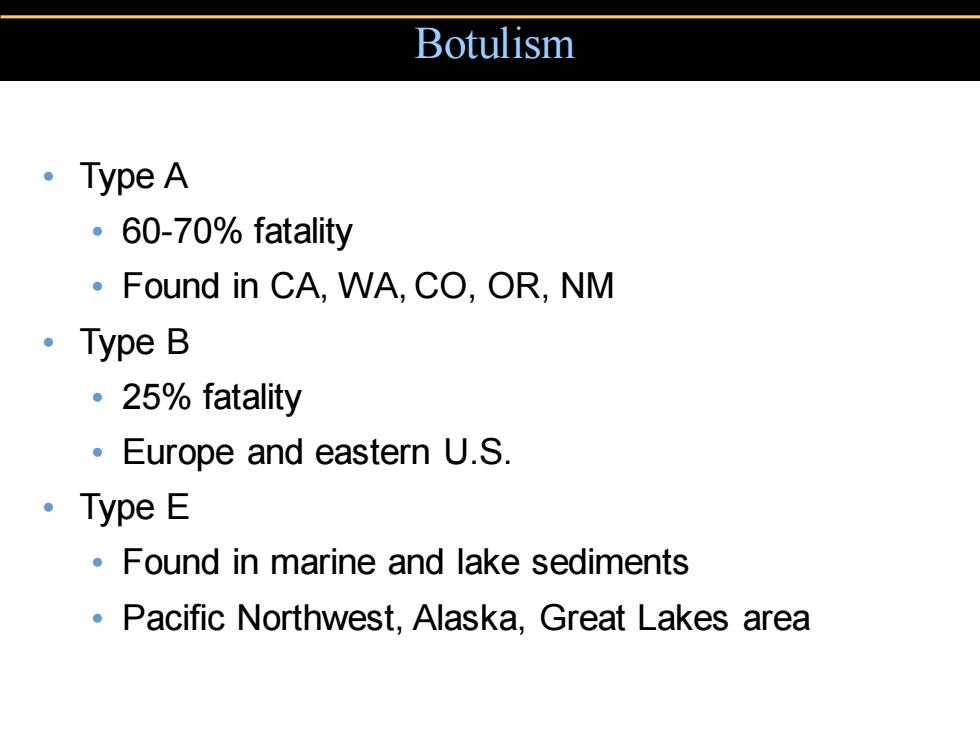
Botulism 。Type A 。60-70%fatality Found in CA,WA,CO,OR,NM ·Type B ·25%fatality Europe and eastern U.S. 。Type E Found in marine and lake sediments Pacific Northwest,Alaska,Great Lakes area
• Type A • 60-70% fatality • Found in CA, WA, CO, OR, NM • Type B • 25% fatality • Europe and eastern U.S. • Type E • Found in marine and lake sediments • Pacific Northwest, Alaska, Great Lakes area Botulism
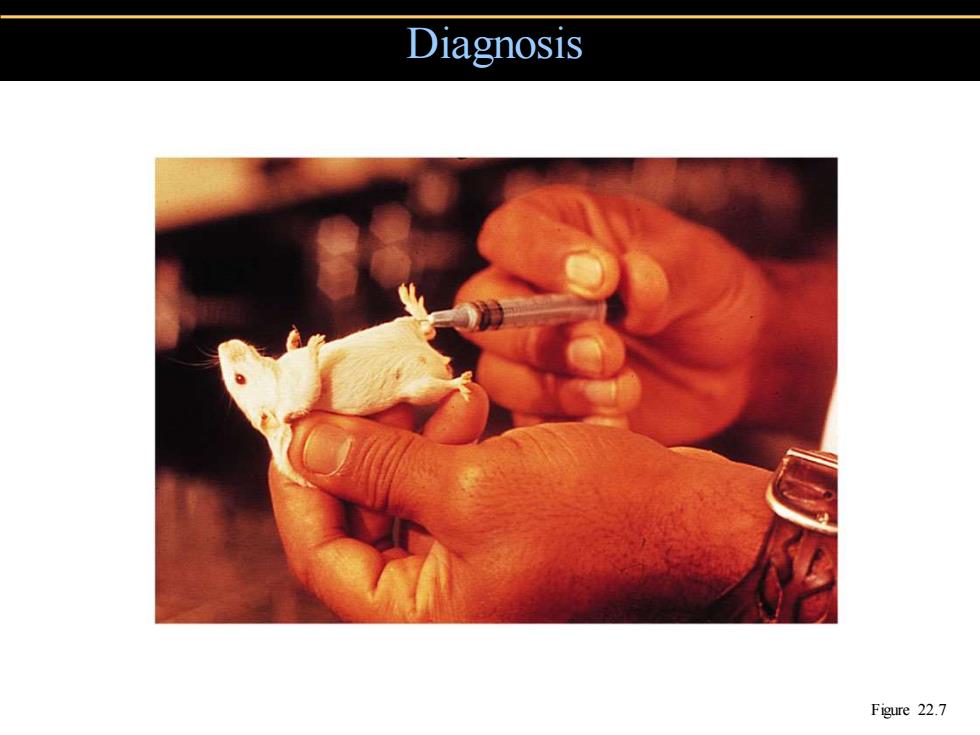
Diagnosis Figure 22.7
Diagnosis Figure 22.7
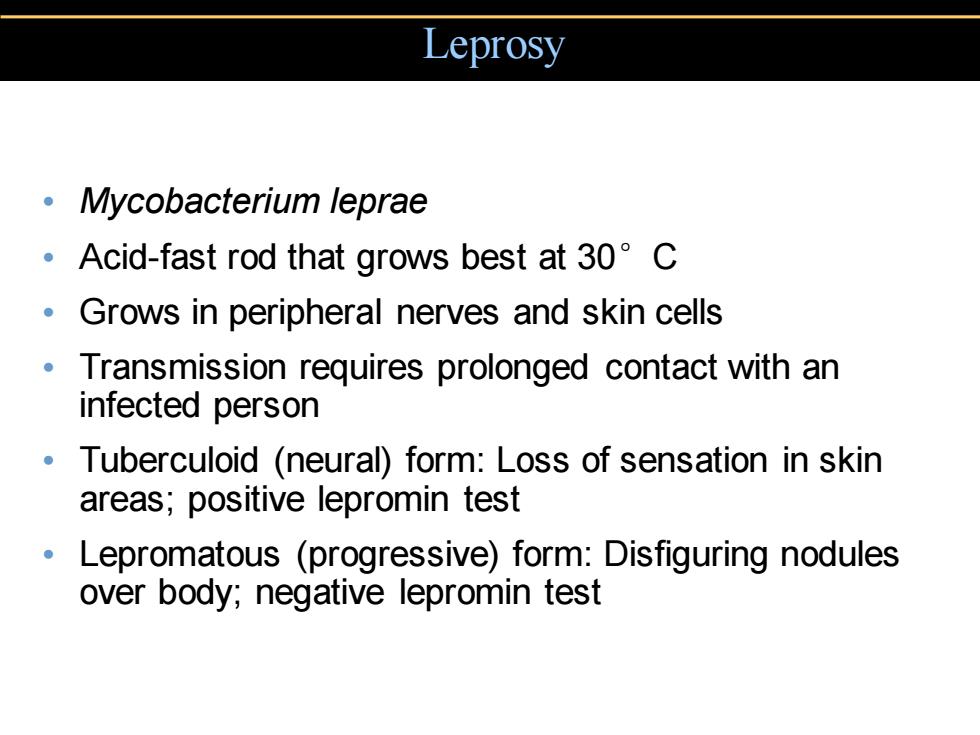
Leprosy Mycobacterium leprae ·Acid-fast rod that grows best at30°C Grows in peripheral nerves and skin cells Transmission requires prolonged contact with an infected person Tuberculoid (neural)form:Loss of sensation in skin areas;positive lepromin test Lepromatous (progressive)form:Disfiguring nodules over body;negative lepromin test
• Mycobacterium leprae • Acid-fast rod that grows best at 30°C • Grows in peripheral nerves and skin cells • Transmission requires prolonged contact with an infected person • Tuberculoid (neural) form: Loss of sensation in skin areas; positive lepromin test • Lepromatous (progressive) form: Disfiguring nodules over body; negative lepromin test Leprosy

Leprosy (a)Tuberculoid(neural)leprosy (b)Lepromatous(progressive)leprosy Figure 22.8
Leprosy Figure 22.8
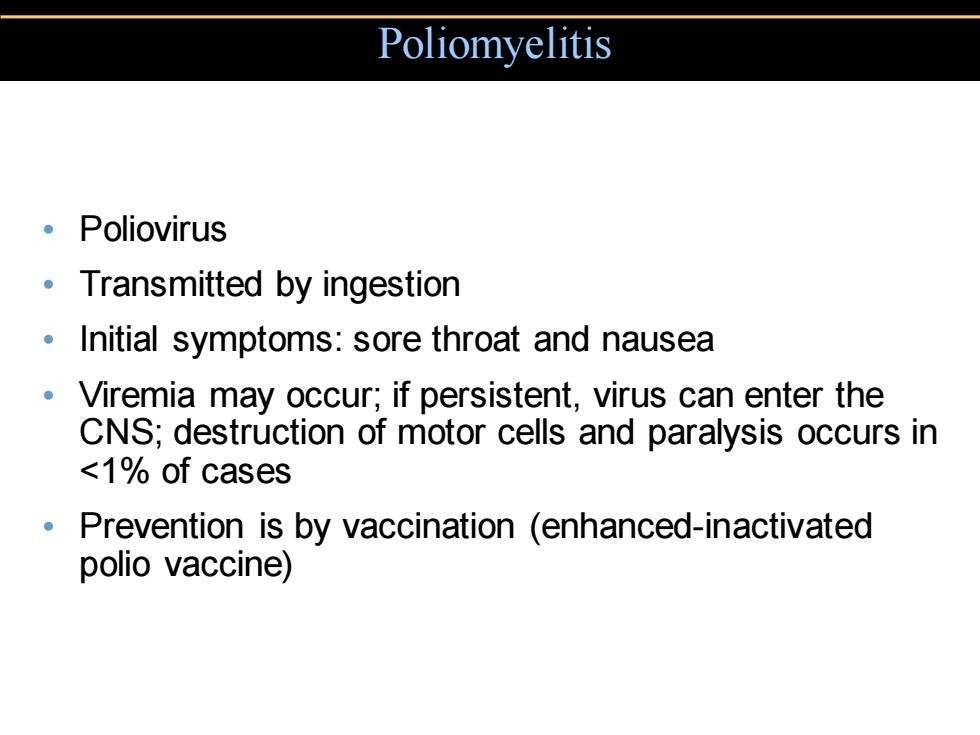
Poliomyelitis 。Poliovirus Transmitted by ingestion Initial symptoms:sore throat and nausea Viremia may occur;if persistent,virus can enter the CNS;destruction of motor cells and paralysis occurs in <1%of cases Prevention is by vaccination (enhanced-inactivated polio vaccine)
• Poliovirus • Transmitted by ingestion • Initial symptoms: sore throat and nausea • Viremia may occur; if persistent, virus can enter the CNS; destruction of motor cells and paralysis occurs in <1% of cases • Prevention is by vaccination (enhanced-inactivated polio vaccine) Poliomyelitis

Poliomyelitis 100.000 1954:Salk(inactivated) vaccine 16 Since 1980:140 of 142 cases associated with 10.000 oral vaccine;2 cases were 1963:Sabin 420 classified as indeterminate. (attenuated) vaccine 8 1,000 6 4 2 100 19821986 199019941998 2002 Year 10 1950 19541958196219661970197419781982198619901994 19982002 Year Figure 22.10
Poliomyelitis Figure 22.10

Rabies virus (Rhabdovirus Transmitted by animal bite Virus multiplies in skeletal muscles,then brain cells causing encephalitis Initial symptoms may include muscle spasms of the mouth and pharynx and hydrophobia Furious rabies:animals are restless then highly excitable Paralytic rabies:animals seem unaware of surroundings Preexposure prophylaxis:Infection of human diploid cells vaccine Postexposure treatment:Vaccine immune globulin
• Transmitted by animal bite • Virus multiplies in skeletal muscles, then brain cells causing encephalitis • Initial symptoms may include muscle spasms of the mouth and pharynx and hydrophobia • Furious rabies: animals are restless then highly excitable • Paralytic rabies: animals seem unaware of surroundings • Preexposure prophylaxis: Infection of human diploid cells vaccine • Postexposure treatment: Vaccine + immune globulin Rabies virus (Rhabdovirus)